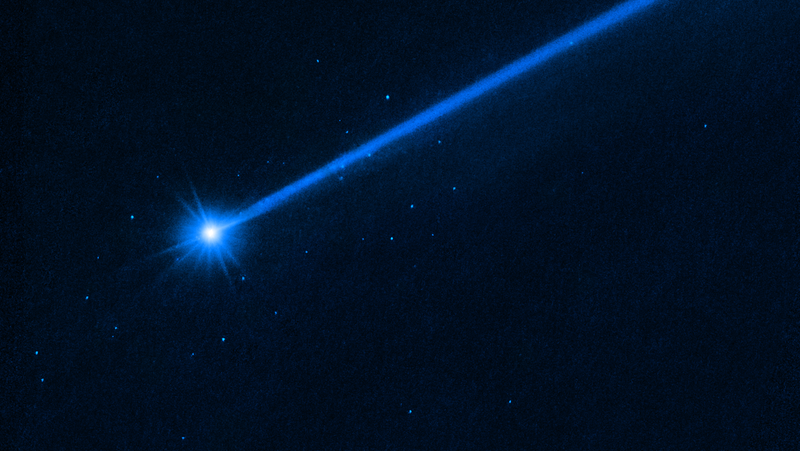Asteroid Displays Unexpected Behavior in Wake of NASA’s DART Strike

The Dimorphos asteroid, now surrounded by nearly 40 space boulders.
After the successful impact of NASA’s DART mission on the Dimorphos asteroid, scientists have encountered a series of unexpected outcomes, the latest being the unanticipated lengthening of the asteroid’s orbital period around its larger partner, Didymos.
In September of last year, NASA’s $308 million DART (Double Asteroid Redirection Test) mission deliberately collided with the Dimorphos asteroid. This fridge-sized spacecraft impacted the 525-foot-wide (160-meter-wide) asteroid at speeds of up to 14,000 miles per hour (22,500 kilometers per hour), aiming to change its orbital path around its larger partner, Didymos. The binary pair is situated 7 million miles (11 million kilometers) from Earth and doesn’t pose a threat to Earth—either before or after the redirection test.
Read more
Alabama fans handle loss to Texas in predictably bigoted fashion
Devs React To Unity's Newly Announced Fee For Game Installs: ‘Not To Be Trusted’ [UPDATE]
Amber Heard Spent Two Months Designing Overwatch Mercy Cosplay For Ex Elon Musk
'She Had Limited Value': Officer Caught Laughing About Grad Student Killed By A Cop Doing 74 In A 25
The third unexpected finding was recently presented at an American Astronomical Society meeting, conducted by researchers from the Thacher School and the University of California at Berkeley. Using the 0.7-meter Thatcher Observatory in Ventura County, California, the team measured Dimorphos’s orbital period 20 to 30 days post-impact. They discovered its orbital period had extended by approximately one minute, resulting in a 34-minute rotation around Didymos, up from the initial 33 minutes.
This was surprising, as the impact was expected to shorten the orbital period, implying that Dimorphos has been slowing down since impact day. The scientists are perplexed by this observation. In their arXiv preprint, they write:
We find that no mechanism previously presented for this system can account for this large of a period change, and drag from impact ejecta is an unlikely explanation. Further observations of the (65803) Didymos system are needed to both confirm our result and to further understand this system post impact.
One theory suggests that the rapidly forming and evolving massive debris cloud, which is developing into clumps, spirals, and other structures, might be impacting Dimorphos’s trajectory. However, the authors of the recent study are not convinced that this phenomenon is the root cause of the prolonged orbital period.
Before the DART mission, Dimorphos’s orbital period was already undergoing slow changes. Still, the observed differences can’t be explained by several known mechanisms, according to the researchers. These include the binary YORP effect (a force from sunlight that changes the spin of two orbiting bodies), mutual tides (gravitational influences between objects), differential Yarkovsky force (a push due to sunlight absorption and heat emission), or the result of the sudden loss of surface mass.
Further observations and insights from more scientists are clearly needed on the matter. An important contribution to this research will come from the forthcoming Hera mission. The European Space Agency (ESA) is set to launch the Hera probe in October 2024, and it’s meant to closely study the Didymos-Dimorphos binary system and delve deeper into the results of the DART experiment. Including those weird and unexpected ones.
For more spaceflight in your life, follow us on X (formerly Twitter) and bookmark Gizmodo’s dedicated Spaceflight page.
More from Gizmodo
What Really Went Down Between Megan Thee Stallion and Justin Timberlake at the VMAs?
Watch The World’s Fastest Accelerating Electric Car Hit 62 MPH In Under A Second
The Plot Thickens Around GOP Candidate Tim Scott’s Alleged Girlfriend
Sign up for Gizmodo's Newsletter. For the latest news, Facebook, Twitter and Instagram.

